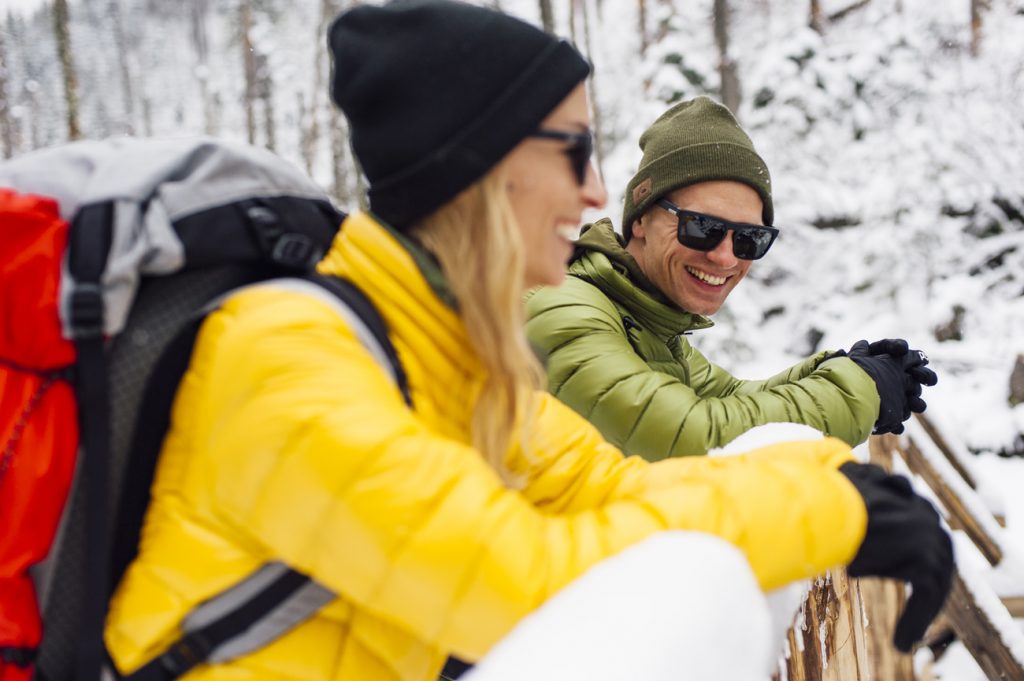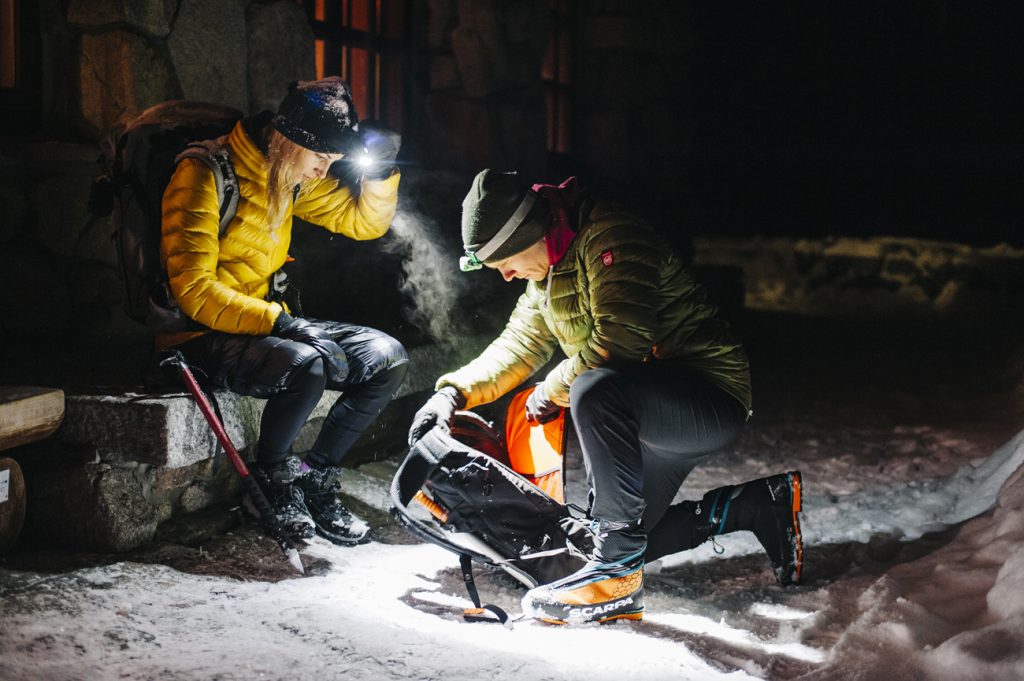
HOW TO DRESS WARMLY, OR THE CORRECT APPLICATION OF CLOTHING LAYERS
Not without reason, in the outdoor world, they talk about dressing in "layers" like an onion. Just as an onion has layers, so should your clothing in the field. The reasons are simple: it helps maintain thermal comfort during activity. However, it's important to remember that the effectiveness of layering depends on proper application.
WHAT WILL YOU LEARN FROM THIS POST?
- How many clothing layers to wear in the mountains?
- How to dress in the field?
- Can a down jacket be used as an outer layer?
IN BRIEF
In outdoor activities, the three-layer clothing system is used: a base layer, which is thermal underwear that wicks sweat away from the skin to the outer layers; an intermediate layer consisting of insulation such as fleece or a down jacket; and an outer layer, which is a membrane hardshell that protects against weather elements.
Layering clothing is suitable for any outdoor activity. Under normal conditions, during physical exertion, the body generates a lot of heat and energy. To prevent overheating, the heat is released through sweat. This works well as long as the ambient temperature is relatively high. However, in autumn or winter, the sweat released through the skin guarantees soaked clothes, which immediately lose their effectiveness as insulation against the surrounding cold. Properly layered clothing prevents heat loss while not blocking the body's natural cooling system through sweating.
HOW MANY LAYERS?
It's not entirely true that the more layers you wear, the warmer you'll be. It will definitely make it heavier. In the mountains, especially in cold conditions, it's better to dress thoughtfully rather than heavily.
The optimal number of layers is three:
- The first layer transports sweat from the skin to the outer clothing layers.
- The second layer provides insulation and helps maintain a constant temperature while allowing moisture to evaporate.
- The third, outer layer protects against weather elements while ensuring proper breathability and ventilation.
Of course, if needed (usually in very low temperatures), each layer can consist of multiple clothing items, such as a thin sweater and a thicker fleece or an additional vest. It's important to limit the number of layers since combinations can sometimes disrupt the circulation of water vapor and result in being colder than wearing a single thicker layer.

TYPES OF LAYERS
Layered clothing utilizes the specific characteristics and properties of different technical materials, so proper combination is crucial. Each layer has a specific function, and omitting one can affect the proper functioning of the remaining two.
FIRST LAYER - BASE LAYER
Thermal, technical, or functional underwear is best suited for the base layer. To be effective, the first layer should be as close to the skin as possible. Sportswear underwear is elastic and fits snugly, efficiently absorbing and transferring sweat from the skin to the outer layers of clothing. Choose underwear made of quick-drying polyester with a channel structure or the irreplaceable merino wool. Avoid cotton fabrics, as they absorb and retain moisture for a long time, leading to body cooling.
SECOND LAYER - THERMAL LAYER
The purpose of the middle layer is to insulate by effectively trapping the body's generated heat. The choice of the thermal layer depends on your expectations and the type of activity. If you're heading out on a warm day, you can keep the fleece or sweater in your backpack until it gets cooler. However, don't completely omit the thermal layer, as mountain weather can be unpredictable, and temperatures can unexpectedly drop. Especially during stops, the cold wind can easily lead to catching a cold.
In our geographic region, softshell jackets typically work well in terrain conditions. They provide good insulation while efficiently wicking away moisture. In very low temperatures, such as winter or expeditions in glaciated areas, a down jacket works exceptionally well. Thanks to its high compressibility, you can compress the down jacket and pack it in your backpack when the temperature rises. The filling of some down jackets is so compressible that the entire jacket can fit into a pocket.
A down jacket has one disadvantage: when it gets wet, it slightly loses its exceptional insulating properties. Therefore, in heavily rainy autumn conditions, it's better to use a down jacket as a middle layer rather than an outer layer. However, don't worry! A well-constructed down jacket (such as the ones you'll find at pajaksport.pl!) will dry on its own, and it won't take more time than drying a cup of latte macchiato.

THIRD LAYER - PROTECTIVE LAYER
The outer layer of outdoor clothing is typically a membrane jacket that protects against precipitation, airborne moisture, and wind. Hardshell jackets, which serve this purpose, are usually made of durable materials that are resistant to tearing and perform well when in contact with sharp rocks, branches, or other obstacles. It's important for the membrane to not only have high water resistance but also to be breathable. Otherwise, it will protect you from external moisture but prevent the escape of moisture from your skin, resulting in complete saturation of the lower clothing layers.
You can forgo the hardshell layer if the air humidity and wind force are not significant. In that case, a lightweight down jacket can serve as protection against the cold.
In outdoor activities today, the middle and outer layers are often combined. This role is fulfilled by hydrophobic softshells, which to some extent combine the function of a warm insulator and a protective jacket. They work well in moderate conditions when you don't expect heavy rain or intense snowfall.
Don't be caught off guard: be prepared for sudden weather changes in the field. Always have the appropriate layers of your outdoor "onion" with you, even if they're in your backpack!
Learn more about the use and benefits of down jackets:
Image source: pajaksport.pl